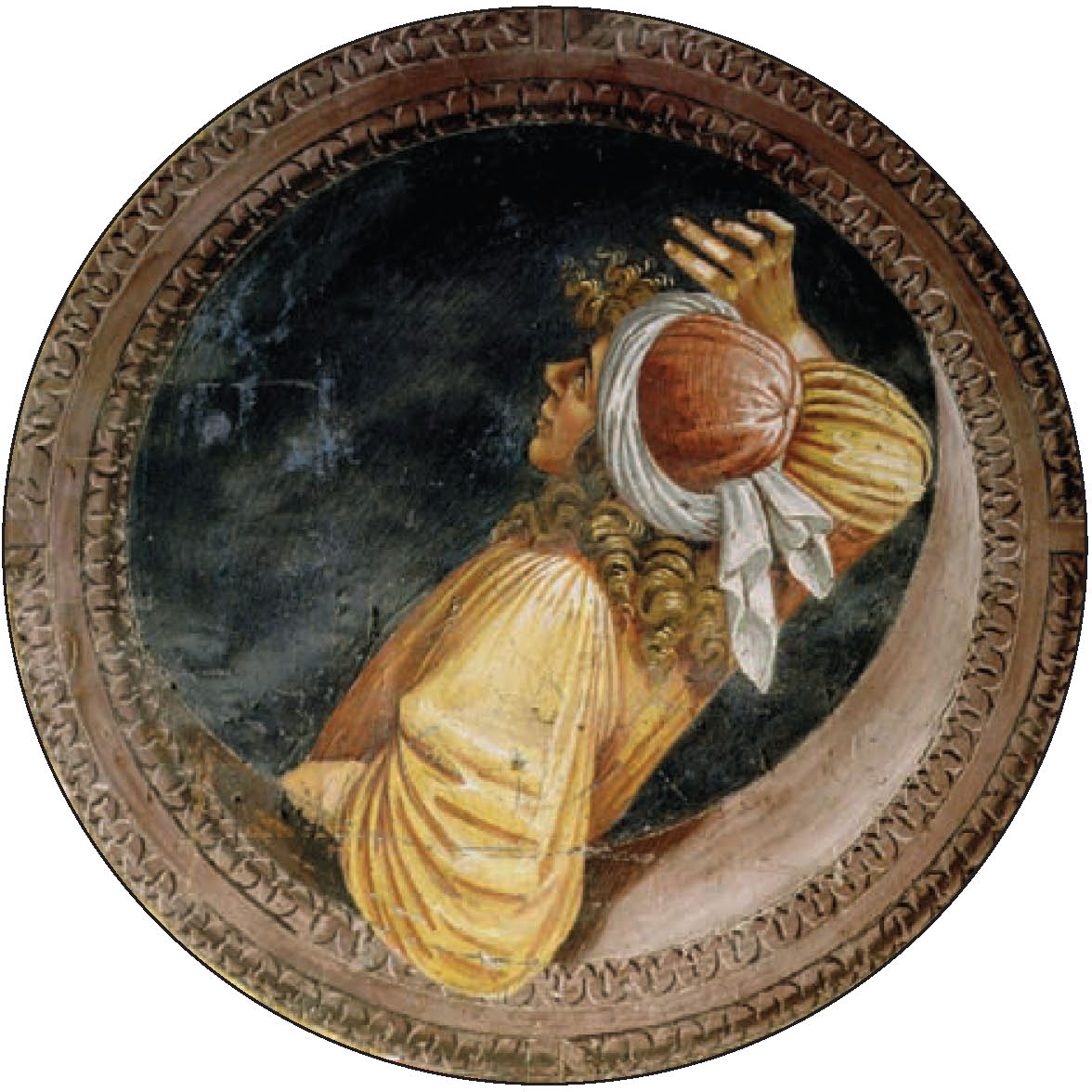![]()
![]()
ON THE ENTRANCE WALL OF THE CAPPELLA NOVA at Orvieto, there is a portrait that fits into the rare category of art objects from which I inadvertently turn away, so powerful are the emotions they induce. This painting is a tour de force. This is one of those occasions when Luca Signorelli painted an architectural setting so that it is completely plausible, and then brought people to life as fully three-dimensional characters occupying the illusory space. This is a wonderful feat, rarely accomplished by any artist in spite of all who have tried to achieve it in myriad styles during different epochs.
The setting Signorelli created is a deep-set circular window cut into a richly decorated wall and framed by an ornate wooden molding that captures the light in ribbonlike scrollwork that, we are convinced, was carved with a chisel. A young man stands inside the room on to which this window opens, propped against the interior wall. His legs and feet are blocked from view by it, but his torso is visible, for he leans back through the opening, with the top of his turbaned head practically outside and his face inside the chapel, which he surveys with total concentration. He is presented from the only angle that could have succeeded in making this conceit succeed: three-quarters from behind, so that the left profile of his face is brought into precise focus. [plate 36]
I don’t know if I can do justice to the excellence of this tondo. We are completely convinced of the weight of the young man’s left arm on the wide windowsill; we apprehend exactly the extent to which he is leaning backward and has arched his rib cage. This sculptural feat has been achieved with marvelous colors. His tunic is a golden yellow, his turban a tomato red. A white scarf is wrapped around the turban; it is a further example of Signorelli’s mastery of the art of painting. This remarkable floating scarf is offset beautifully by the matte black of the background of the scene.

Plate 36. Empedocles
The young man’s face is even more extraordinary than his clothing and his golden ringlets, which catch the light as they fall over his shoulders. His skin is illuminated so as to seem real, and his expression is one of fascination and hope.
Dugald McLellan has a theory about who the man is. “Although usually identified as Empedocles, he has none of the conventional characteristics of an ancient philosopher and sage, and seems more like any number of vitelloni or young blades Signorelli would have seen in the streets and piazzas of Orvieto.” Whoever he was based on, there is no question about what he represents to us. He is the essence of youth.
He has a capable body. He is full of expectation and optimism; he is eager and engaged. Everything else in the chapel he is surveying is about the end of life, about death and pain, but the young man embodies the marvelous beginning of adulthood. He evokes the immense pleasure of being human on this earth.
Oh my God, what an incredible joy: to be in one’s late teens, healthy, nimble, comfortable with one’s self. To have the luxury of leaning backward and contemplating life. To arch one’s back with no muscle aches and have the simple pleasure of taking it all. To stand there in my parents’ garden and be with Richard and Marietta and their big minds. To feel obsessed—exhilarated, guilty, edgy, amorous, secretive, cocky, crazed—and to relish it. To exult in the complexity of Freud and repression and human longing. To have all those years in front of me again. To be able to explore and celebrate forever.